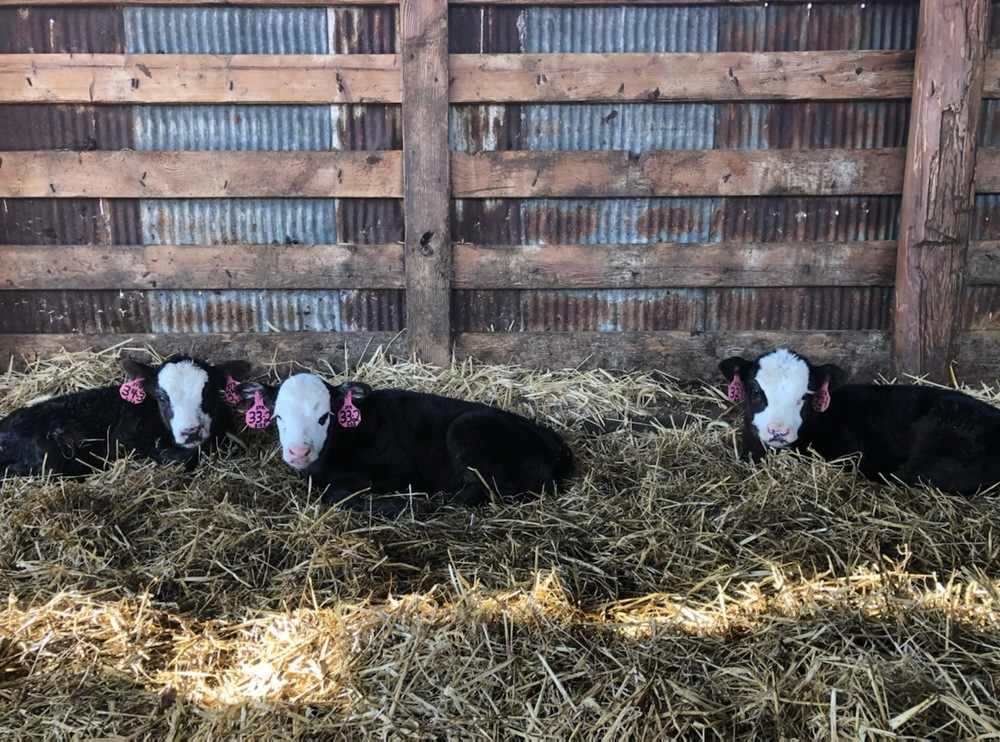Cattle Care at the Motherhouse Part One
Posted on November 1, 2021, by Loretto Community
By Angela Rakes

Photo by Angela Rakes
As Education and Outreach Coordinator for the Loretto Motherhouse, I often get questions about the Motherhouse Farm’s raising of cattle for meat. As part of the Farm & Land Management Committee’s presentation to the 2021 Assembly, the Community will hear from Loretto farmer Cody Rakes as he discusses how cattle can be a climate change solution as part of regenerative agriculture. On the farm we often use the phrase, “It’s not the cow, it’s the how.” Let’s talk a little about the “how” when it comes to the care for the animals, giving them the best life possible, while honoring and respecting that they are giving their lives to feed our Community. This article is part one of a two-part series.
Each cow on the farm has a calf once a year, either in spring or fall. When it is time for calving, that group of cows is moved into the hay feeding barn. Here they are given hay, which is dried grasses, usually crabgrass, harvested from the farm. At all times all cattle have access to fresh water and a mix of vitamins and minerals, formulated by a nutritionist, that the cattle otherwise do not get from their diet. The cows calve in the barn to protect them from predators, namely coyotes and black vultures. Having them in the barn also makes it easier for us to keep a close eye on them, in case they need assistance during calving. When each calf is born it receives an ear tag for identification, a full health check, and its information is recorded in the farm records. The calf and its mom are then turned out into a small field to wait while the rest of the babies are born. When calving season ends, the entire group goes back out to the larger fields to graze. The cattle are rotationally grazed, meaning they are moved often and not allowed to graze one area for too long. This is good for their health and gives them fresh grass regularly.
Twice each year all cattle receive checkups and vaccinations as needed. With the help of a local veterinarian, vaccination protocols have been set up for the cattle to help prevent illness. Occasionally, illness still shows up, usually pinkeye. When this happens the eye is washed out, sprayed with an anti-microbial spray and covered with an eye patch to protect it from sunlight and flies.
In a few cases the eye still does not heal, and we have to use antibiotics. Antibiotics are dosed by weight. For accurate dosing, cattle can be weighed with the push of a button when they enter the head chute. This head chute is part of a low-stress system that moves the cattle up an alley and into the chute that holds their neck and squeezes them like a gentle hug. During all of this we keep the cattle, and humans, as calm as possible. Cody has a very strict “no yelling” policy.
Our cattle receive careful, consistent attention for the benefit of each animal and for the benefit of the farm and humans.
Check out next month’s Interchange for part two on cattle care from pasture to plate. Visit facebook.com/motherhousefarm to check out more pictures and videos of these practices in action.

Photo by Angela Rakes
